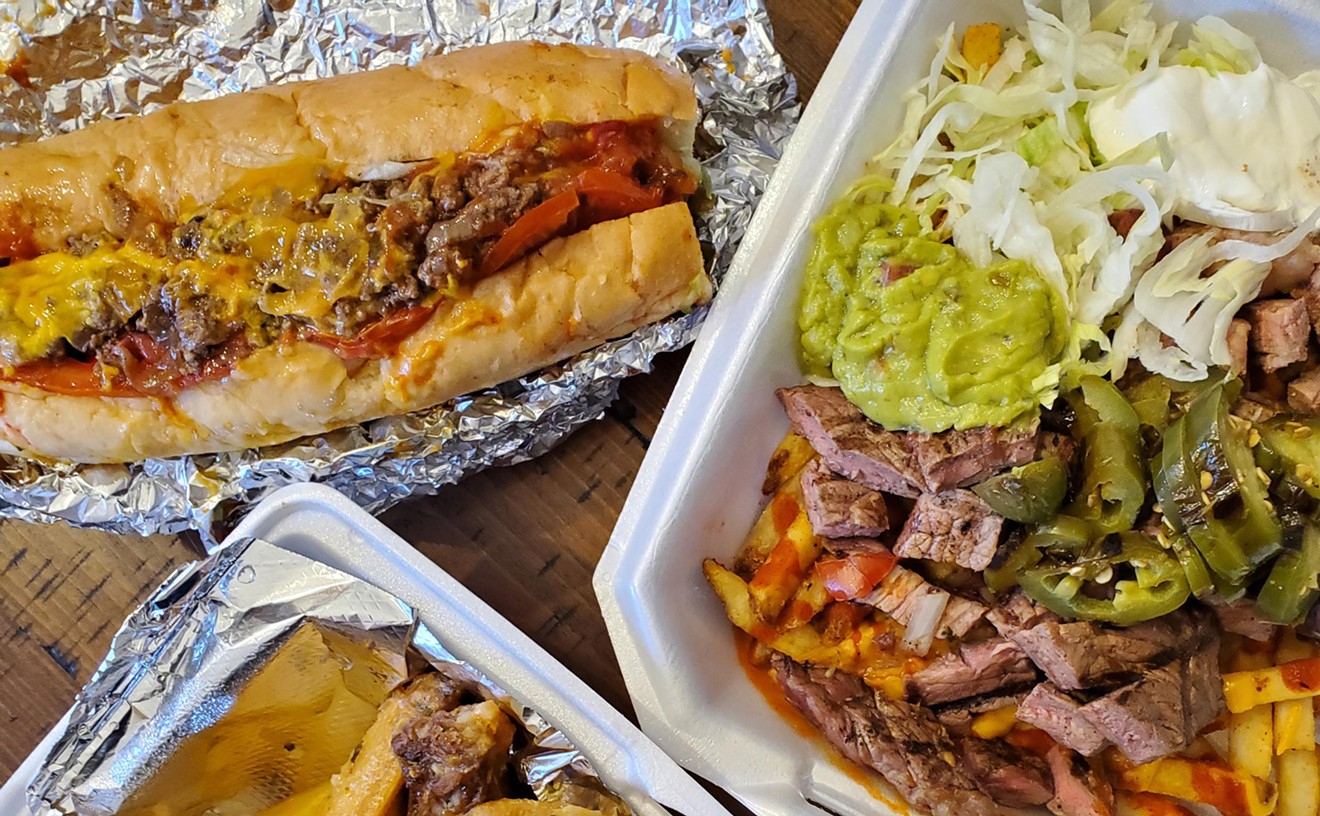Jason Hinds, who works with the British dairy farm Neal's Yard and tours the United Kingdom in search of handmade cheese, visited the Whites' Cheese Importers Warehouse in Longmont a few days earlier, and the women are hugely enthusiastic about his wares. But there are also a couple of Spanish cheeses and two from Switzerland -- cave-aged Emmentaler and Gruyère. And periodically, Linda or Clara remembers another cheese that we simply have to try: a perfect French Brie, a Tilsit from the 75-strong herd of a German woman in Powderhorn, Colorado, a Spanish Cabrales made with a combination of goat, sheep and cow's milk.
The English cheeses are young, a little muted in taste. They don't pack the French wallop; they're neither sharp nor show-offy. It takes a moment for their warm, subtle flavors to hit the tongue. When they do, we search for words. The Cheshire is chalky and has a slight tang: sour, lemony. For another, we toss around words like "nutty," "creamy," "tart," "mellow." We note how the Lancashire starts out crumbly but melts into smoothness in your mouth. The Stilton leaves us speechless. For a few moments, anyway.
"Jason said this might need another week to ripen," Clara says. "There could still be some bitterness."
But it's hard to imagine any improvement over what we're tasting. The faint hint of bitter offsets what might otherwise be a too-fulsome creaminess.
Linda and Clara look remarkably alike, although Clara towers over her mother and her hair is red to Linda's blond. They are beautiful women, with mobile, expressive faces. For them, cheese is a mission.
Clara is lamenting the fact that supermarkets sell cheese tightly swathed in plastic wrap. "It can't breathe," she says. "Cheese is very alive."
The law requires that the Whites' own cheeses be packaged this way, but they encourage customers to unwrap their purchases as soon as they get home, cover them in wax paper and store them in the vegetable bin. "Americans don't know how wonderful these cheeses are and how to care for them and serve them," Clara says. "They absorb the flavor of plastic."
Linda's interest in food began in the '60s, when she and her husband, Lyman, were hippies in San Francisco, working at the Good Karma Cafe and determined to change the way America ate. In the early '70s they moved with infant Clara to Boulder, where Linda baked and sold whole-grain bread -- sometimes making as much as $35 a day -- and Lyman worked at the University of Colorado bakery. At the time, health food was the province of small stores that stocked packages of nuts and grains and a few softening fruits and vegetables, or earnest co-ops to which customers were expected to contribute labor and where they suffered limited food choice (moth-ridden grains, wilting greens) and inefficient service in exchange for a sense of virtue.
After some years, a couple of food businesses, a couple of moves and three children, the Whites became interested in cheese and began searching for cheeses made from raw, hormone-free milk. They visited American artisans, sampling cheeses from Vermont cheddar to Amish country blue to fresh goat. But they found that even the most adventurous grocers could be persuaded to stock at best one type of unprocessed cheese, usually a sharp white cheddar. "Almost no one in Colorado knew about Brie," Linda says.
They persevered. In 1976 they ordered their first group of imported cheeses from Linda's uncle, who had his own import warehouse in New York. Times were changing. The hippies had rejected their parents' meatloaf-and-Jell-O-salad dinners for foods they thought of as purer and more authentic. Rice. Grains. Fresh-grown produce. It was a political statement, but they also found that some of this stuff tasted good. In the '80s, hippie strictures merged with the yuppie search for innovation and culinary adventure. Food choices came to indicate sophistication and status. The co-ops evolved into specialty supermarkets that featured shelves and shelves of organic and good-for-you foods. Chèvre and sun-dried tomatoes appeared on menus. America discovered basil and quinoa, olive oil and fresh Parmesan.
The '90s saw the rise of the Star Chef. Restaurants began presenting their food in sculpted shapes on plates that were painted and patterned with sauces. Gourmet supermarkets became links in chains as predatory as any other massive corporation. Everyone discovered shallots.
Through all these changes in the landscape, the Whites' original vision, while deepening, remained curiously intact. They want to sell food prepared without poisons by people who care about their work; they want to show the public that cheese can have the delicious complexity of fine wine, tasting of sun and water, of the animals that contributed the milk and the land where they grazed. Linda points out that the kind of Cheshire she is serving us has been made in England for centuries, since before the Roman invasion. Its tang comes from the bedrock salt underlying the area's grasses. To eat a cheese like this is to help perpetuate a way of life and, in some small sense, to participate in it.
The Whites' interest has helped keep many small farmers afloat. Their Longmont warehouse now contains almost 500 kinds of cheeses, which are sold to high-end restaurants and supermarkets such as Wild Oats and Whole Foods up and down the Front Range under the name Willow River. They are also sold to individual customers. Clara, who has just spent a week in Spain tasting cheese, does the buying with Linda. Her brother Samm works in the sales department.
Linda's primary focus now is the European Market, a specialty shop in the same building that contains jams and jellies, olives, vinaigrettes (including one made with Meyer lemons), oils, cookware, candles, funky china, soap and body lotion, cookies, Italian chocolate, German marzipan and a shelf of books on food and cooking. In the back is the table at which we sit, along with a deli serving salads, soup, sandwiches and an ethereal pizza rustico -- a tender crust containing three buttery cheeses, a layer of spinach and a contrasting layer of ham.
Clara persuades us to try a sliver of pressed quince paste along with a slice of tangy goat cheese -- a Spanish Vare. The effect is startling, sweet against salty, soft against firm. She and Linda are talking about the use of bovine growth hormone by commercial producers to increase milk production. It has made life hard for small farmers who want to keep their products pure, they say.
"We want to get people to slow down," Linda adds, "and to show them that everything in life doesn't have to be how cheap, how fast, how much."











